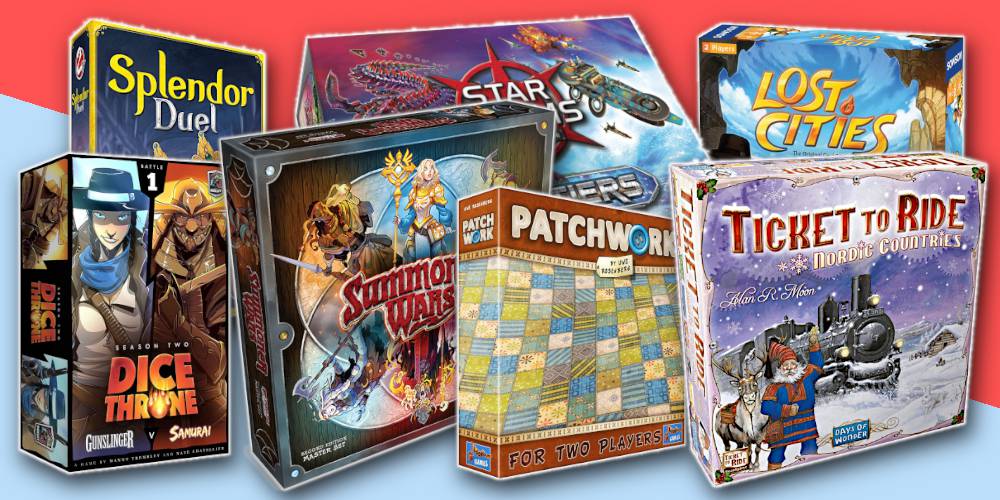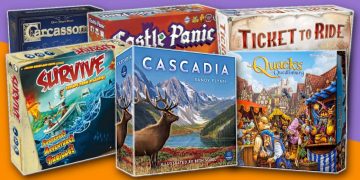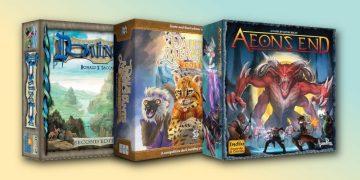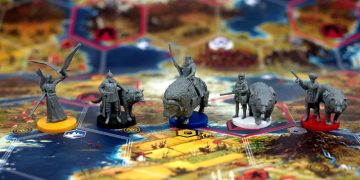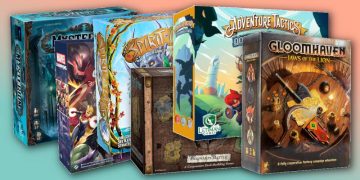As I've gotten older, I find it harder than ever to get a group of friends together for game night. I'm busy, they're busy, our schedules rarely line up, and we can barely meet up to chat, let alone play games.
That's why I've learned to love and embrace two-player board games and card games. It's a lot easier to meet up with one other person, especially if you have a life partner. No large gatherings required!
I have a separate selection of cooperative two-player board games, but sometimes you're in the mood for competition—and that can mean anything from indirect interaction to cutthroat conflict.
Here are our picks for the best two-player board games to play against someone in head-to-head action!
15. Coup
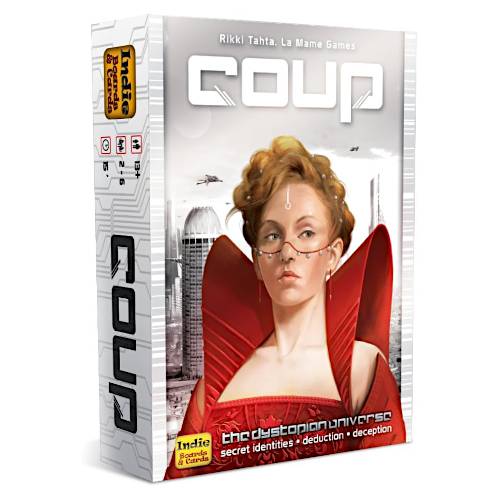
Coup is generally seen as a filler-type game that can even feel like a party game at times. And while the game does include an official two-player variant, it's notoriously bad.
So, why am I including it on this list? Because Coup fans have come up with a community-designed two-player variant that turns this game of blind bluffs into one of true strategic depth.
It's the perfect mixture of decision making, social deduction, planning ahead, and deception. Go ahead and learn how to play the ultimate Coup variant for two players!
14. Carcassonne
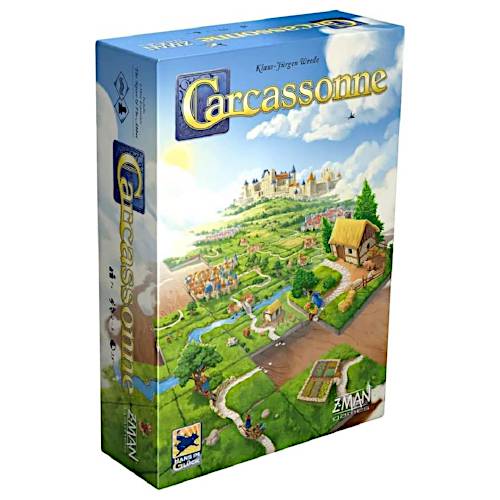
If you're even remotely interested in board games, you've probably at least heard of Carcassonne. It's a modern classic, and for good reason.
This tile placement game couldn't be simpler: you draw a tile, then you place the tile. The game's depth comes from deciding on placement, because there are various ways to score points.
Together, you're building out the region of Carcassonne, which consists of different features: cities, roads, farmlands, cloisters, etc. Only the player who completes a feature can score it, leading to lots of tense moments.
Carcassonne is great in a group, but it truly shines with just two players. That's when the strategic elements come out on full display.
13. Kingdomino Origins
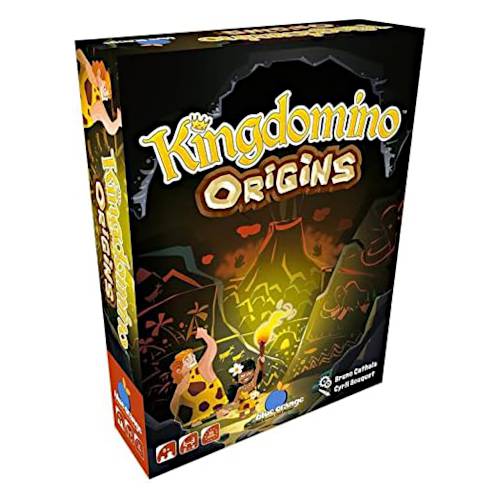
Kingdomino Origins is the latest in the Kingdomino series, and it's definitively the best version—because it includes multiple game modes, with the basic mode reminiscent of the original Kingdomino and the latest mode introducing a whole new layer of strategy on top.
Every round, players take turns drafting from a batch of tiles and adding those tiles to your own growing kingdom.
The twist? Each tile has a unique value, and whoever drafts the least valuable tile in one round becomes first-to-draft in the next round. Every round is a decision between grabbing a great tile now or foregoing it to set yourself up for an early pick next round.
Kingdomino Origins's Tribe mode introduces resources that are earned when you play tiles, which can be spent to acquire Caveman tokens that score in numerous ways on top of your kingdom tiles.
The Tribe mode really shines for two players, especially when you play the 7x7 kingdom size variant. You'd be surprised how much extra strategic depth this adds to the original Kingdomino.
12. Cascadia
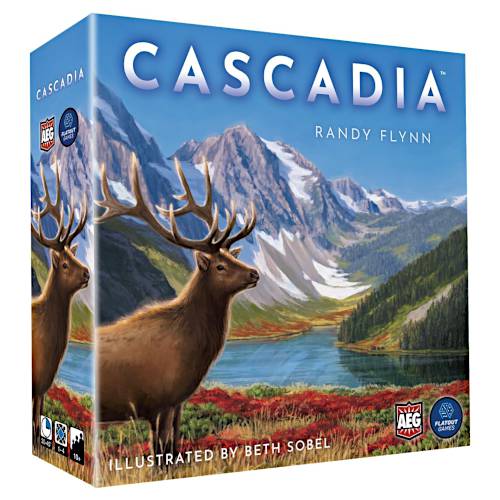
Cascadia is a tile placement game that feels like a gentle puzzle. You'll be drafting tile-and-token pairs from a shared pool, then using those tiles and tokens to build out your own individual wildlife park.
The habitat tiles represent the landscape of your park, and your goal is to maximize the region size of each of the different terrain types.
Each habitat tile supports a unique combination of animal tokens, and you'll want to place your animal tokens according to certain patterns—each animal has a distinct pattern—to maximize token scoring.
It's this tension between drafting a tile-and-token pair, building out your landscape, and populating it with different animals that makes Cascadia such an engaging puzzle, but not in a stressful way.
There's little direct competition beyond the tile-and-token drafting, but it's fun to compare scores at the end. Also, each animal type has four different scoring patterns (you select one of each animal at the start of the game), so there's a lot of replayability.
11. Star Realms
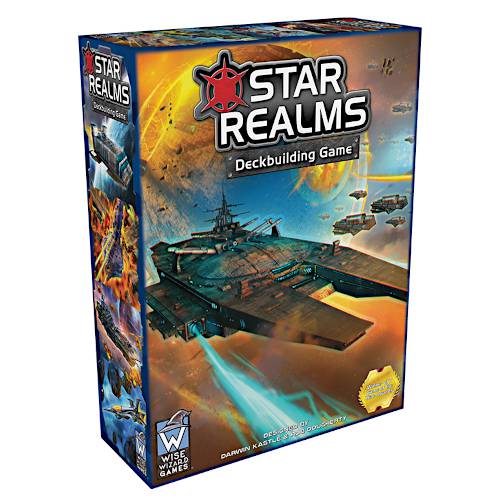
Designed by Robert Dougherty and Darwin Kastle
Supports 1 to 4 players
About 20 to 40 minutes
Star Realms is a streamlined head-to-head deckbuilding battler. Both players start with the same basic deck of action cards, but over the course of the game, you'll both be acquiring different cards to your individual decks that result in diverging strategies.
You'll be playing cards to acquire cards, but you'll also be playing attack cards (to damage your opponent) and structure cards (to absorb incoming damage from your opponent). You win by dropping your opponent's health to zero before they do it to you.
10. Lost Cities
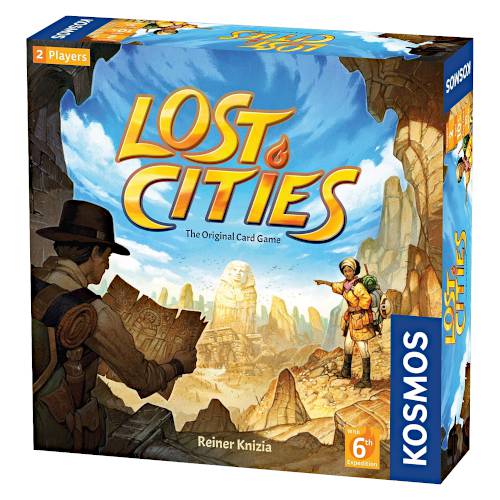
Designed by legendary German game designer Reiner Knizia, Lost Cities is a two-player card game that's easy to pick up and play.
Lost Cities involves a deck of cards with five different suits, with each suit consisting of cards ranked 2 to 10. (There's actually an optional sixth suit, which you can use if you want a longer game.)
Players take turns playing cards from their hand to build "expeditions"—cards of a single suit in ascending order (but not necessarily consecutive)—or discarding from their hand. Then, draw one card.
Each expedition is scored by summing all cards in it. However, there are two major twists that make Lost Cities stand out from other card games in this crowded set collection genre.
First, when you start an expedition, it starts at -20 points. This means you aren't trying to build expeditions for all five suits—rather, you need to focus on two or three suits to overcome that initial deficit.
Second, each suit has its own discard pile, and when you draw a card at the end of your turn, you can draw from the deck OR the top card of any discard pile. Throwing away a card may help your opponent!
Between all of this, there are layers of crunchy strategy that make Lost Cities one of the best two-player card games. Plus, setup and teardown are both extremely quick, so Lost Cities is always easy to bring out.
9. Hive
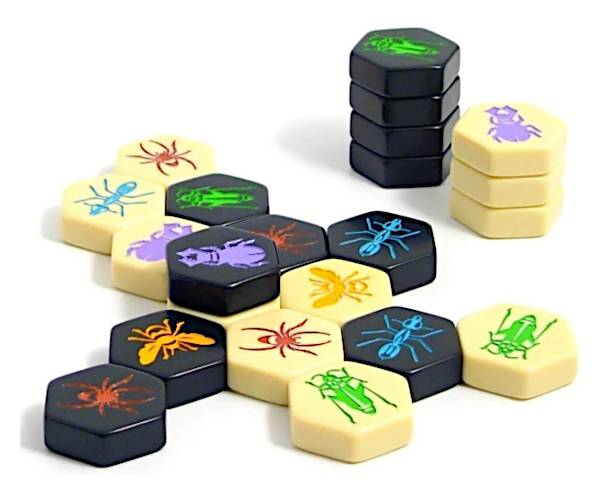
Hive is best described as "chess for people who hate chess." There is no game board here—rather, you play hexagonal tiles that become the board and determine where you can move or place subsequent tiles.
Each tile represents a type of bug, and each bug type has a unique rule for how it can move. For example, Ants crawl around the perimeter of the board, Grasshoppers jump across tiles in a straight line, and Beetles climb on top of tiles and prevent them from moving.
The only caveat is that a tile cannot move if doing so would "break the hive." In other words, the entire board must remain contiguously connected throughout the entire game.
To win Hive, you must surround your opponent's Queen Bee tile before they surround your own Queen Bee tile. (Queen Bees are placed within the first four turns of the game.)
8. Onitama
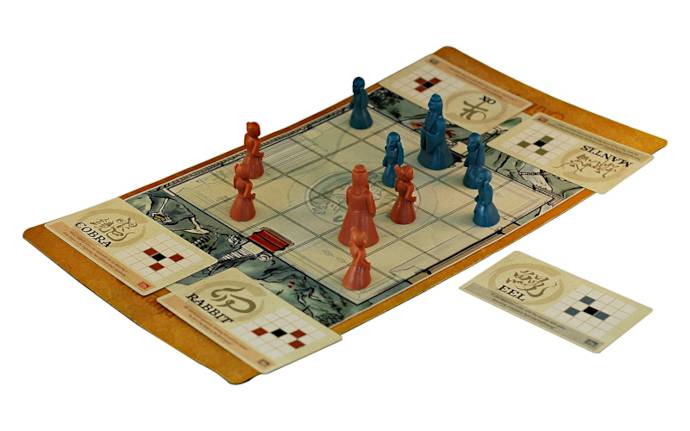
Like Hive, Onitama is a wonderful head-to-head tactical strategy game for gamers who want to like chess but hate chess.
In Onitama, both players start with five pieces: 1 Master and 4 Students. The game is played on a 5x5 grid and the goal is to capture the opponent's Master OR move your Master to the opponent's Shrine.
Here's the twist: you move your game pieces by playing movement cards from your hand, and once played, that movement card goes to the opponent. Furthermore, you only have two movement cards at any given time, and you can apply the movement to any of your pieces.
The base game of Onitama comes with 16 movement cards but only 5 of them are used in a game, so every game is different and there's a lot of replayability. It's chess without all the determinism!
7. Targi
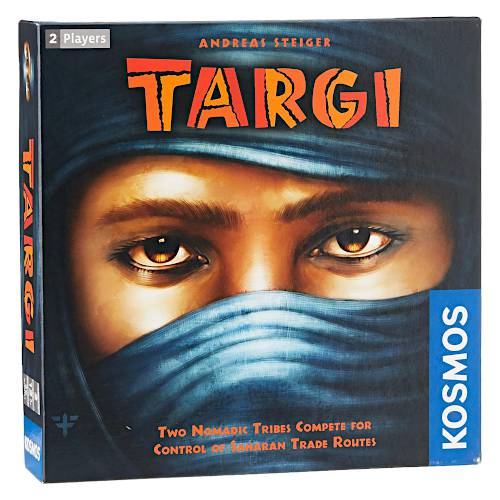
Targi is a two-player strategy game that takes place on a 5x5 grid of action cards, with the perimeter cards always the same but the central cards changing throughout the game.
Players take turns placing three workers on the perimeter cards, with these restrictions: workers can't be placed on an occupied card and workers can't be placed on a card across from another worker.
Once all workers are placed, you place additional markers on the central cards where your workers intersect. In total, you'll have five cards marked, and you resolve all the actions on those cards.
Actions involve gaining resources, exchanging resources, moving markers from one card to another, and acquiring victory points. Whoever has the most points at the end wins.
6. Patchwork
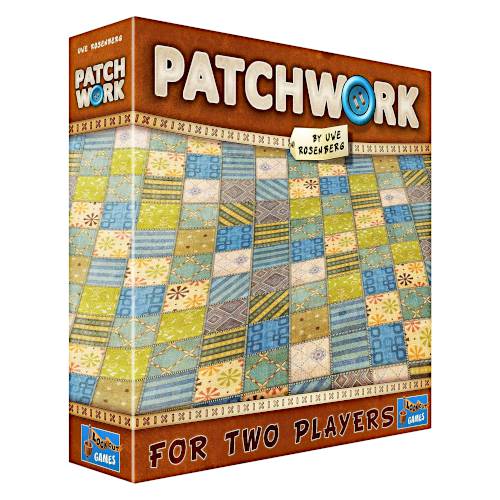
Patchwork is a game where players take turns drafting Tetris-style polyomino tiles and placing them in their own 9x9 grid (quilt), trying to fill it out as much as possible before time runs out.
What makes Patchwork a particularly interesting two-player game is that there are a few interesting mechanics on top of that polyomino puzzle.
First, tiles are bought with buttons as a currency. Some of the tiles earn buttons as income at certain milestones, with more difficult tiles earning more of an income. Buttons are also worth points at the end.
Second, on top of costing buttons, tiles may also cost time. Time causes players to move along a time track, and next turn goes to whoever is lagging behind. You don't want to go too far ahead—otherwise, your opponent may get several turns in a row.
The delicate balance between the button economy, the time track, and the puzzle of fitting pieces into your quilt makes Patchwork an engaging competition that feels good to play.
5. Ticket to Ride: Nordic Countries
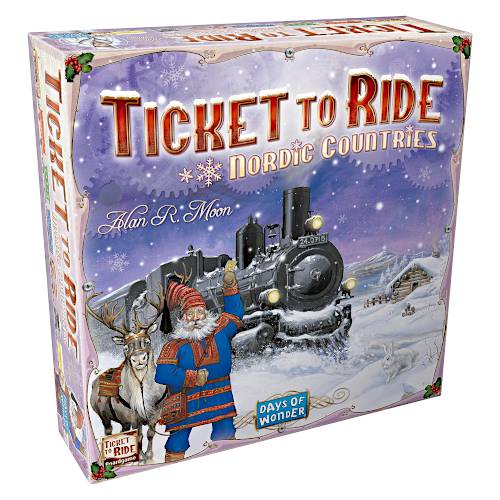
The world-famous Ticket to Ride series is available in many varieties by now, with each version introducing a unique twist on gameplay.
Ticket to Ride: Nordic Countries is the ideal version for those who want the full heft of the original Ticket to Ride, but streamlined and perfected for two players. (It also plays excellently with three players.)
What's different in Ticket to Ride: Nordic Countries? The map is a little smaller and the routes are more restrictive, meaning players will be blocking each other a lot more—whether intentionally or not.
Otherwise, the rest of the gameplay in Ticket to Ride: Nordic Countries is essentially the same: collect cards, play them to build routes, and try to fulfill destination tickets to score the most points.
Note: If you'd rather play an express version of Ticket to Ride that only takes 15-20 minutes, Ticket to Ride: London is the one you want. It's excellent for two or three players.
4. Dice Throne
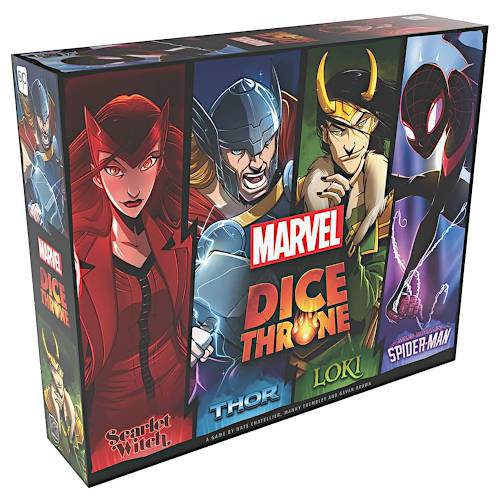
Designed by Nate Chatellier and Manny Trembley
Supports 2 to 4 players
About 20 to 40 minutes
Dice Throne is affectionately known as "battle Yahtzee," so if you've ever played Yahtzee, then you should know what to expect here: lots of dice rolling, with the option to re-roll dice and push your luck.
In Dice Throne, you play as one of the many characters released so far, with each one having a unique set of abilities that are activated by rolling character-specific dice and trying to make certain combinations. Players can re-roll one or more dice, hence Yahtzee.
Abilities can inflict damage, cause status effects, or make all kinds of other things happen. You'll also gain combat points throughout the battle, which you can spend to play cards and upgrade your abilities.
If you want a fun, competitive dice-chucking game with lots of replayability, Dice Throne is the one.
Note: In addition to Marvel Dice Throne, there are also Season One and Season Two characters. You can mix-and-match however you want because any character can go up against any other character. Grow your roster over time!
Season One sets include:
Season Two sets include:
Note: Technically, Dice Throne supports more than two players, in both free-for-all and team-based formats.
However, each additional player increases the average game time significantly and harms the pacing, so I only recommend it as a head-to-head dice battler.
3. Summoner Wars (Second Edition)
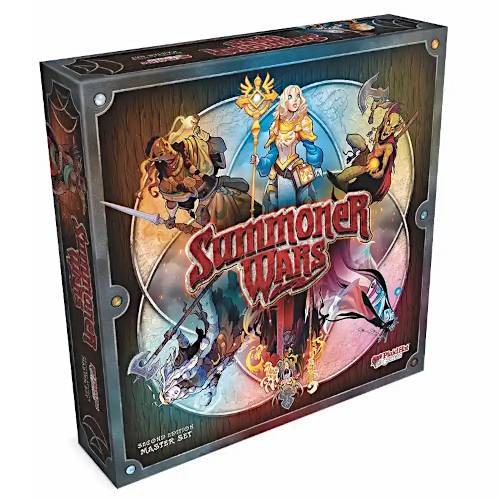
First things first: don't confuse Summoner Wars 2E with the original Summoner Wars. They share some similarities, but the revamped Second Edition is a better game that's incompatible with the first.
In Summoner Wars 2E, each player plays as one of the summoner characters, who each have their own unique deck of common units and champion units. These units are summoned to the battlefield over the course of the game by expending mana.
The battlefield itself is a 6x8 grid, on which the units will be moving around and attacking each other in various ways.
Long story short: Summoner Wars 2E is a tactical skirmish-type battler where the first to kill the opponent's summoner character wins. Each summoner plays very differently, lending to lots of replayability.
Note: Summoner Wars (Second Edition) comes in a two-character Starter Set and a six-character Master Set. The Starter Set is half the price, but the Master Set is a much better value.
2. Caper: Europe
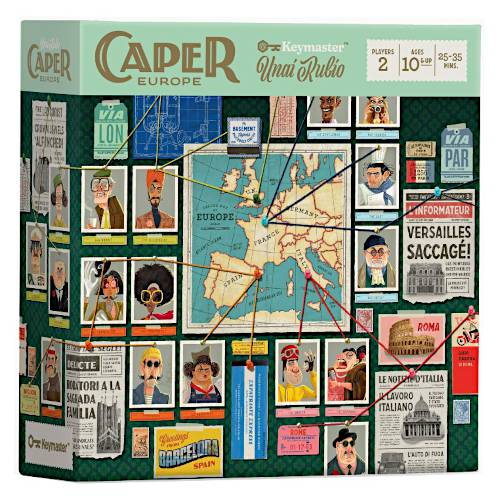
Caper: Europe is a head-to-head card drafting game where each player is a criminal mastermind who's trying to hire crew and equip them with gear to pull off heists in three separate locations.
Played across six rounds, you'll both play a card from your hand, then switch hands, play another card, switch hands, etc. Those cards are played to one of three locations, and the goal is to exert more influence than your opponent over each location to score points.
But there are other ways to score points: stealing priceless goods from the locations, hiring people who fit well in your crew, and equipping your crewmates with complementary gear.
Not to mention that Caper: Europe comes with four different decks that each twist the gameplay in some way, enhancing replayability.
1. Splendor Duel
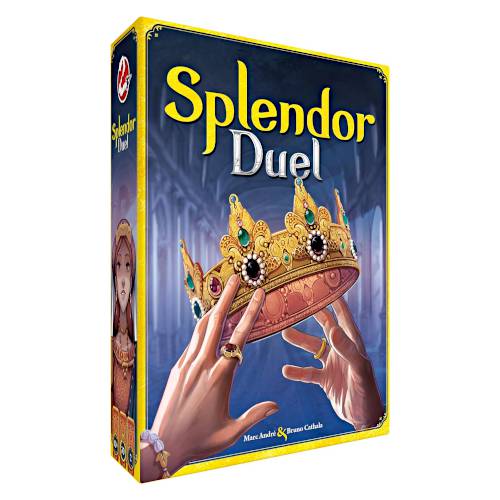
If you ask me, Splendor Duel (not to be confused with the original Splendor) is the ultimate two-player board game, especially if you're looking for a game that's strategic and thinky but not prone to analysis paralysis.
In Splendor Duel, you'll take turns drafting currency tokens that you can spend to purchase cards, which grant you victory points, crowns, special actions, or permanent discounts for different currency types (which you'll need in order to buy the most valuable cards).
At its core, Splendor Duel is a back-and-forth engine-building game where you're trying to buy the best cards as efficiently as you can.
The thing is, there are three paths to victory—first to reach 20 total victory points, 10 victory points of a specific color, or 10 crowns—and each path is equally viable in every game. It's always a nail-biter to the end.
Splendor Duel has a few twists that make it a clear winner over Splendor for two players, including the spatial token board, the privilege scrolls, the special actions, and the crowns.
